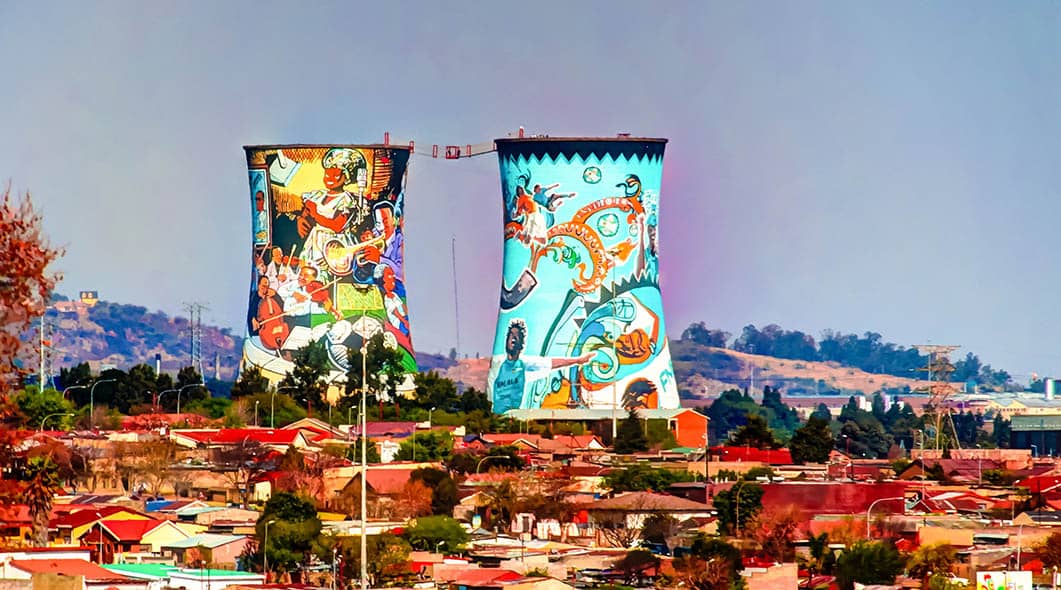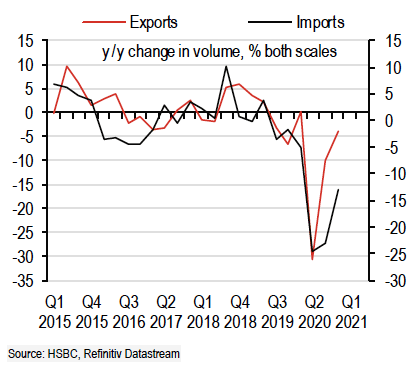Thee Forces Conspiring to Support the South African Rand (for now), says HSBC
- Written by: Gary Howes

Image © Adobe Images
- GBP/ZAR spot rate at publication: 19.90
- Bank transfer rates (indicative guide): 17.50-18.00
- Transfer specialist rates (indicative): 18.11-19.70
- Get a specialist rate quote, here
- Set up an exchange rate alert, here
There are three factors driving an ongoing appreciation of the South African Rand say analysts at one of the world's largest global lender and investment bank, however these drivers should wane in the medium-term.
HSBC Bank Plc says the Rand has been supported through 2021 by a credible South African Reserve Bank, strong global investor risk sentiment as well as a healthy external trade account.
"The ZAR has been one of the best performing EM currencies since the start of the year. Such an outperformance is eye-catching when many other EM currencies are still significantly away from their pre-COVID-19 levels," says Murat Toprak, CEEMEA FX Strategist at HSBC Bank.
The Rand has appreciated by 0.78% against the Pound in 2021, with much of the gains coming in recent weeks amidst an acceleration in buying of the South African currency.
But against the Dollar gains now stand at 2.30% and against the Euro they stand at 3.50% for the year.
HSBC say they identify three main forces as playing in favour of the South African currency, and how long they remain intact could well determine how long it remains in demand:
1) Strong terms of trade gains and external rebalancing
This refers to South Africa's lower import outgoings and increased export earnings. HSBC identify a strong export performance, not only in nominal terms but more importantly in volumes.
They say it is difficult to foresee the trade balance swinging back into a deficit in the near-term.
2) Low inflation and SARB’s prudent policy
Inflation is identified by HSBC to be "well contained" with CPI inflation rising to 3.2% y/y in March from 2.9% in February.
"Such data are ZAR-positive as they enhance the ZAR’s appeal from a real rates standpoint," says Toprak.
The SARB holds a target range of 3-6% and therefore will be under no pressure to raise rates, therefore assuring accommodative monetary policy for the foreseeable future.
3) ZAR’s sensitivity to positive global risk appetite
The Rand, like other commodity and Emerging Market currencies has a strong traditional correlation with global risks sentiment that means it tends to appreciate when markets are rising, and fall when investors are selling.
"It actually could be the most powerful force behind the ZAR’s appreciation over the recent months," says Toprak.
A number of analysts we follow note the backdrop for Emerging Markets remains friendly and expect this to underpin the currency.
Secure a retail exchange rate that is between 3-5% stronger than offered by leading banks, learn more.
HSBC economists expect the global backdrop to continue supporting a 'risk on' investor mode in the near-term.
"Those 3 forces combined are likely to continue to support the ZAR in the near-term. However, we are sceptical about the sustainability of the ZAR’s appreciation trend over the medium-term," says Toprak.
The current account surplus (point 1, above) is unsustainable over time and HSBC say they expect higher inflation later in the second quarter will erode the attractiveness of South African bond yields.
The Rand is also said to no longer be cheap from a valuation standpoint.
"If investors bought the ZAR a year ago because it was cheap, this argument is no longer valid," says Toprak.
Furthermore, South Africa's fiscal challenges remain intact and the country's debt burden is expected to rise at a fast pace, increasing pressure on the government to enact reforms.





